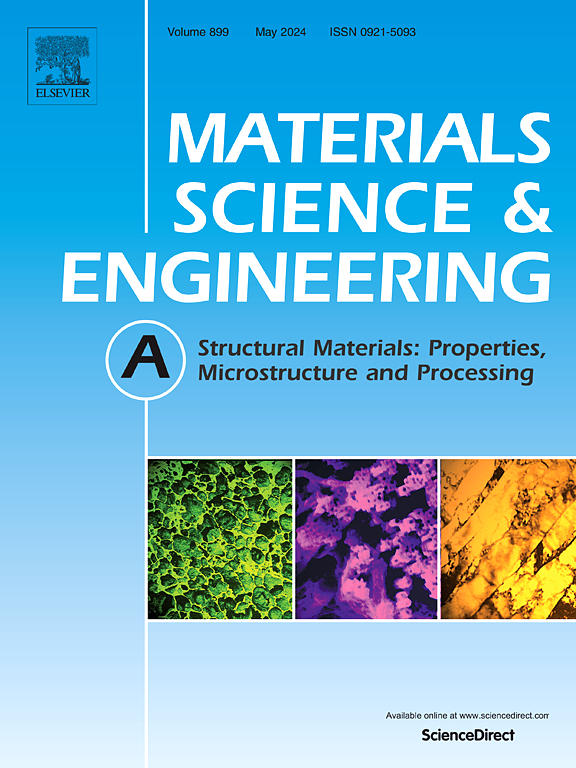通过添加Al和V改善FeCoNi复合合金的力学性能:优化相稳定性和微观组织
IF 6.1
2区 材料科学
Q1 MATERIALS SCIENCE, MULTIDISCIPLINARY
引用次数: 0
摘要
fcc结构复合合金(CCAs)在室温下具有优异的延展性,但其相对较低的强度限制了其在结构上的应用。本研究通过研究Al和V含量对(FeCoNi)75V25−xAlx (x = 0-25 at.%) CCAs的相稳定性、微观结构和力学性能的影响,解决了强度-塑性权衡问题。Al和V的加入促进了从有序L12相到无序FCC相的相变,形成了多尺度分层双相结构,显著提高了机械性能。其中,退火后的(FeCoNi)75V16Al9合金的抗拉强度约为1504 MPa,拉伸伸长率超过15%。实验结果表明,FCC相在晶粒内由L12纳米相强化,在晶界处由点状或针状L21纳米相强化。此外,L21纳米沉淀物增强了BCC岛,点状或板状FCC/L12相增强了BCC岛。这些综合强化机制协同作用,使该复合材料具有显著的高屈服强度。此外,晶粒和相的多尺度非均匀分布以及不同的析出相组织使合金在塑性变形过程中保持较高的应变硬化率,从而达到强度和塑性的最佳平衡。因此,这些发现为设计具有改进机械性能的cca提供了有价值的见解。本文章由计算机程序翻译,如有差异,请以英文原文为准。
Improving the mechanical performance of FeCoNi compositionally complex alloys through Al and V additions: Optimizing phase stability and microstructure
FCC-structured compositionally complex alloys (CCAs) are recognized for their excellent ductility at room temperature, but their relatively low strength limits their structural applications. This study addresses the strength-ductility trade-off by investigating the effects of Al and V contents on the phase stability, microstructure, and mechanical properties of (FeCoNi)75V25−xAlx (x = 0–25 at.%) CCAs. The Al and V additions promote a phase transition from the ordered L12 to the disordered FCC phase upon heating, forming a multiscale hierarchical dual-phase structure that significantly enhances mechanical performance. Among them, the annealed (FeCoNi)75V16Al9 alloy shows an impressive ultimate tensile strength of approximately 1504 MPa and a tensile elongation exceeding 15 %. Experimental observations indicate that the FCC phase is reinforced by L12 nanoprecipitates within grains and dot-like or needle-like L21 precipitates at grain boundaries. Additionally, the BCC islands are strengthened by L21 nanoprecipitates and toughened by dot-like or lath-like FCC/L12 phase. These combined strengthening mechanisms synergistically endow this CCA with its remarkably high yield strength. Moreover, the multiscale heterogeneous distribution of grains and phases, along with the diverse precipitate structures, enables the alloy to maintain high strain-hardening rates during plastic deformation, thus achieving an optimal balance of strength and ductility. These findings thus offer valuable insights for designing CCAs with improved mechanical properties.
求助全文
通过发布文献求助,成功后即可免费获取论文全文。
去求助
来源期刊

Materials Science and Engineering: A
工程技术-材料科学:综合
CiteScore
11.50
自引率
15.60%
发文量
1811
审稿时长
31 days
期刊介绍:
Materials Science and Engineering A provides an international medium for the publication of theoretical and experimental studies related to the load-bearing capacity of materials as influenced by their basic properties, processing history, microstructure and operating environment. Appropriate submissions to Materials Science and Engineering A should include scientific and/or engineering factors which affect the microstructure - strength relationships of materials and report the changes to mechanical behavior.
 求助内容:
求助内容: 应助结果提醒方式:
应助结果提醒方式:


